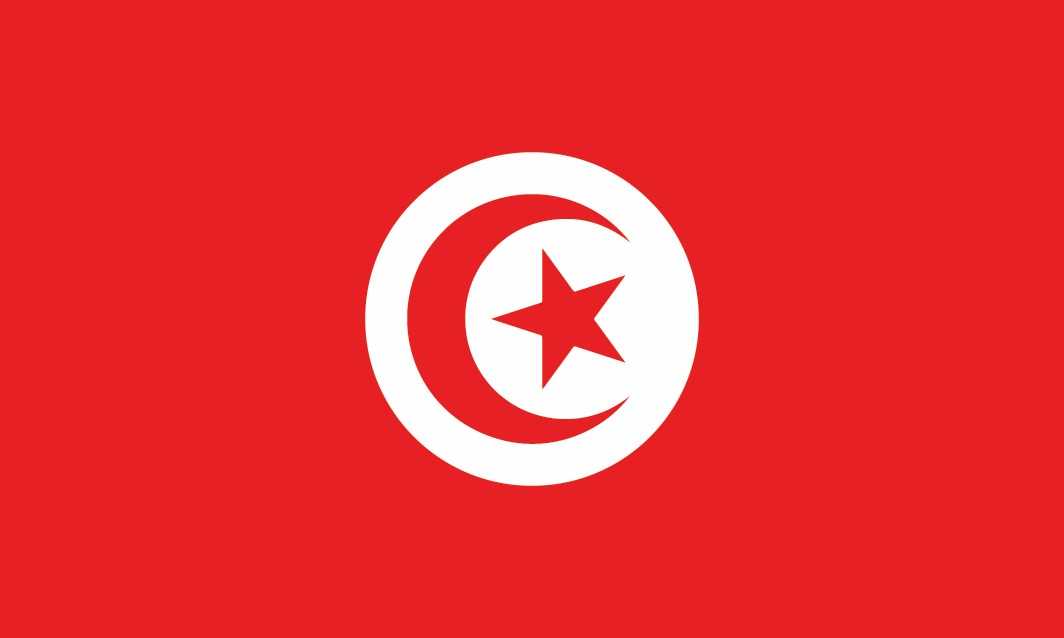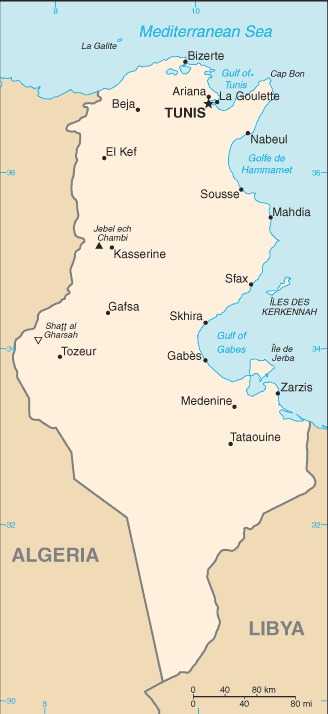Introduction
Background
Many empires have controlled Tunisia, including the Phoenicians (as early as the 12 century B.C.), Carthaginians, Romans, Vandals, Byzantines, various Arab and Berber kingdoms, and Ottomans. In 1818, France established a protectorate. The French recognized Tunisia as an independent state in 1956.
Geography
Area
total : 163,610 sq km
land: 155,360 sq km
water: 8,250 sq km
Climate
temperate in north with mild, rainy winters and hot, dry summers; desert in south
Natural resources
petroleum, phosphates, iron ore, lead, zinc, salt
People and Society
Population
total: 12,048,847
Ethnic groups
Arab 98%, European 1%, Jewish and other 1%
Languages
Arabic (official, one of the languages of commerce), French (commerce), Tamazight
Religions
Muslim (official; Sunni) 99%, other (includes Christian, Jewish, Shia Muslim, and Baha'i) <1%
Population growth rate
0.58% (2024 est.)
Government
Government type
parliamentary republic
Capital
name: Tunis
Executive branch
chief of state: President Kais SAIED (since 23 October 2019)
head of government: Prime Minister Kamel MADDOURI (since 7 August 2024); President Kais SAIED dismissed Prime Minister Ahmed HACHANI the same day he appointed Kamel MADDOURI
Legislative branch
summary: bicameral legislature consists of the National Council of Regions and Districts (77 seats) and the Assembly of the People's Representatives (161 seats)
Diplomatic representation in the US
chief of mission: Ambassador Hanene TAJOURI BESSASSI (since 1 December 2021)
Diplomatic representation from the US
chief of mission: Ambassador Joey HOOD (since 2 February 2023)
Economy
Economic overview
lower middle-income North African economy; drafting reforms for foreign lenders; high unemployment, especially for youth and women; hit hard by COVID-19; high public sector wages; high public debt; protectionist austerity measures; key EU trade partner
Real GDP (purchasing power parity)
$153.637 billion (2023 est.)
$152.988 billion (2022 est.)
$149.106 billion (2021 est.)
Real GDP per capita
$12,300 (2023 est.)
$12,400 (2022 est.)
$12,200 (2021 est.)
Exports
$17.258 billion (2022 est.)
$14.054 billion (2021 est.)
$11.237 billion (2020 est.)
Exports - partners
France 22%, Italy 16%, Germany 14%, Spain 4%, Libya 4% (2022)
Exports - commodities
garments, insulated wire, refined petroleum, crude petroleum, pure olive oil (2022)
Imports
$22.5 billion (2022 est.)
$18.198 billion (2021 est.)
$14.574 billion (2020 est.)
Imports - partners
Italy 14%, France 14%, China 9%, Germany 7%, Turkey 6% (2022)
Imports - commodities
refined petroleum, natural gas, plastic products, wheat, cars (2022)
Page last updated: Thursday, August 08, 2024




